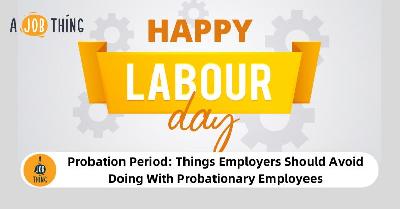
How to Give Effective Feedback at Work
Create Job Description Using AI
Write appealing job descriptions for any job opening to attract the most qualifield and suitable candidates. FOR FREE.
try now
Giving feedback is not an easy job! We might be afraid to upset the other person. But research shows that 98% of employees are less engaged in their work when managers give limited or no feedback.
There are ways to have feedback conversations that will leave employees feeling empowered to achieve their goals, rather than hurt or frustrated. Here are the four steps to follow:
1. Be objective in your observations
First rule of good feedback: only give feedback on what you see and hear. If an employee raises an issue they’re having with a colleague, don’t rush to give feedback to the colleague. Instead, observe them more closely to see for yourself.
You need to be objective in your observations. Feedback based on personal bias will cause the employee to take it personally. For example, if you observed your employee's desk is a mess, you might think they're lazy. But you might be biased toward tidiness while, in reality, the employee is too busy to clean; they might even work better in the clutter.
To stay objective, we should look at their work performance compared to their normal output. This would help us come up with a specific, work-related issue to raise with them, and provide us something to have an objective and collaborative discussion around.

In order to give effective feedback, one must be objective in their observation.
2. Ask yourself three questions before giving the feedback.
This next step before delivering feedback is called the “check yourself before you wreck yourself” step. Managers aren’t always prepared to deliver feedback, so the conversation is vague, and the employee feels upset. Instead, ask yourself these questions:
• Have I identified what I want to see change?
Figure out how to communicate this in specific terms. “You seemed disengaged in our meeting today,” is not clear enough. Instead, identify the (objective) facts: “You seemed disengaged in our meeting today because you didn’t participate in the conversation like you normally do.” Now, the employee knows which behaviour you’re giving feedback about and how to adjust.
• What has this person’s experience at work been in recent weeks and months?
Behaviour doesn’t change without reasons. There might be factors (a family issue, a major change in their team structure) to consider.
• Whose needs am I meeting with this feedback?
Not all feedback will be helpful to the employee. Sometimes, the desire to give feedback might actually come from a place of frustration. It can be difficult to know the difference, so ask a trusted colleague for some perspective.
3. Build trust when giving feedback.
With steps one and two done, you are now prepared to give feedback. Start by building trust in the conversation.
For example, you were put into a management position above a close coworker, which created some tension and a lack of trust. They doubt your authority and interest in supporting them. What will help is to show them you are invested in their goals. Say: “I know you want to be promoted. I would like to invite you to receive some feedback that may help you achieve your goal,” rather than, “Here is my feedback.” This will establish trust and help you to have a good conversation. It will also help you repair your relationship.
4. Set actionable steps.
Giving feedback doesn’t end with the delivery. Instead of saying, “Here’s what you did, and here’s what I want you do,” talk about the different ways to move forward, and set clear action steps. Ask, “What do you think we can do?” and “What can you commit to, and when can we follow up on it?” If you co-construct goals this way, you will have a mutual commitment from the person you’re giving feedback to. When the person has made some of those changes, recognize and celebrate them.
The majority of employees say they want more feedback. Always ensure your feedback is consistent and follows these steps, and you’ll be more likely to have productive conversations with employees about their performance and start seeing real improvements. After you’ve been through the feedback process once or twice with an employee, they might start asking for your feedback before you even offer it.
Hiring? Let us fill all your vacancies at AJobThing.
This article is based on Four Steps To Giving Effective Feedback At Work by Jeff Miller.






